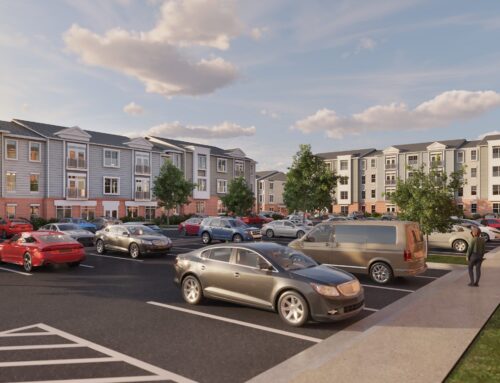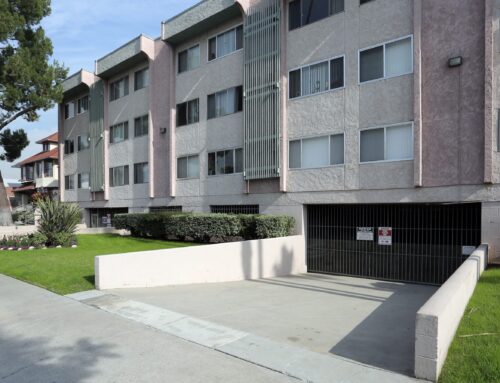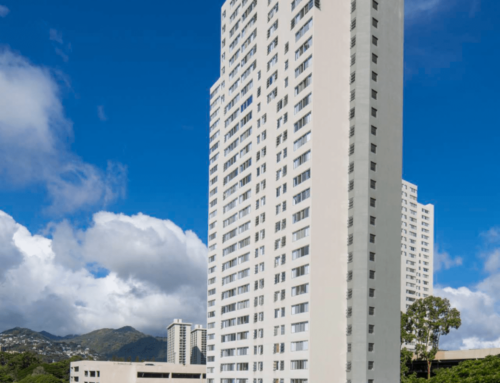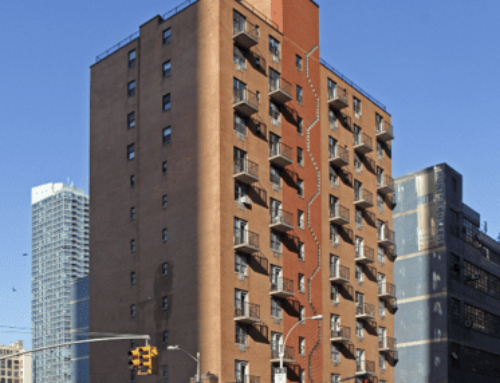By Laura Calugar
Q&A: Partnering Our Way Out of the Affordable Housing Crisis
Standard Cos.’ Steven Kahn discusses solutions for the shortage of affordable units in New York City and the impact of rent control laws on low-income and workforce housing.
More than five months after the Housing Stability and Tenant Protections Act of 2019 was made official, discussions around rent-stabilized housing in New York City seem to be never-ending. The same thing can be said about the affordable housing shortage.
There is still a lot of work needed to produce, preserve and improve affordable housing units across the metro. In an interview with Multi-Housing News, Steven Kahn, director at Standard Cos., detailed the impact of the new package of laws on workforce and low-income communities. He also weighed in on the role of public-private partnership in maintaining the current stock of affordable apartments.
How would you describe NYC’s affordable housing market today?
Kahn: Like most—if not all—other major metropolitan areas across the county, the affordable housing situation in NYC is at a critical point. This is widely acknowledged and there are steps being taken on multiple fronts aimed at both creating more affordable housing and preserving the affordability of the existing stock. New legislative and policy initiatives have changed the landscape and that is something that owners and developers are going to have to adapt to, but these sorts of changes are not unique to New York City.
Like many other cities, New York City has a robust economy and a very large-scale affordable housing need, and private firms and the capital they bring will continue to be a critical component of any comprehensive effort to solve the affordable housing crisis. This requires close collaboration and partnership between the public and private sectors.
What are the first effects of the new rent control laws?
Kahn: The effects of the new rent control laws in NYC have proven to be swift and far reaching, and the long-term implications could be very troubling. These laws change the landscape for existing housing that is affordable to low-income and working-class households, both for owners and for residents. These laws seem to create a disincentive to invest in the existing housing stock, which could ultimately lead to residents having homes that, though they are affordable, fall into a state of disrepair.
This, in turn, could lead to additional burden on the City or other public agencies that will have to devote considerable time and resources to resolving resident issues and working with landlords who do not have the budget capacity to invest further in these buildings. With rental income growth allowed under the laws unlikely to match growth in expenses such as taxes, utilities and maintenance costs—which are constantly inflating—residents will face deterioration in their housing.
These new rent control laws make the need for private firms to get involved even more acute. The new rent control laws are largely aimed at protecting the affordability of housing units that are already under rent regulation. There is still a lot of work needed to produce new affordable housing units, preserve the units that are at risk of exiting affordability programs as neighborhoods continue to change and make improvements to the countless affordable housing properties in New York that are in need of extensive rehabilitations.
The New York City Housing Authority has recognized that much of the public housing stock in New York City has maintenance needs that far exceed the public capital available to address those needs and has reached out to private sector firms to form partnerships that will complete the rehabilitation using private capital. The formation of public-private partnerships like this is a model that must be replicated and expanded to achieve meaningful progress in solving the affordable housing crisis in New York City and nationwide.
Do you expect multifamily real estate investors to redirect their investments into other property types given that the new laws appear to be disincentivizing the very professionals that can alleviate the affordable housing shortage?
Kahn: Yes, we do expect to see some shift in investor’s focus within New York City, but we do not expect it to adversely impact our plans to continue creating, preserving and improving affordable housing. If anything, it makes the role that Standard can play in easing the affordable housing shortage even more important. It could also create additional opportunities for us to get involved in NYC if other property owners look elsewhere or find that their current holdings no longer provide sufficient returns.
Converting market-rate units into affordable apartments is definitely a solution. How does this work from a financial standpoint? How hard is it to find the necessary funds for your projects in New York City?
Kahn: It is not easy to do, but savvy firms with the ability to design and implement creative capital structures and access private capital can navigate this complex process, ultimately delivering high-quality affordable housing that will benefit the community for generations. Like other major cities, New York City is a difficult place to convert market-rate housing to affordable, and the opportunities to do so must be carefully managed.
Please tell us a few details about your most recent acquisition in Manhattan and your plans in the borough.
Kahn: Our most recent acquisition in New York City was Polyclinic Apartments, a 151-unit property located in Midtown Manhattan that benefits from a federal rent subsidy. These apartments were at risk of being converted to market-rate housing, but Standard Communities was able to work with both the City and federal governments to structure a transaction that preserves them as affordable housing for the long-term.
Built in the 1930s as a hospital, Polyclinic Apartments was converted to apartments nearly 40 years ago, with the affordability restrictions on the property set to expire not long after we acquired it. Polyclinic’s 151 units range from one to three bedrooms, making it a unique asset in that it provides truly affordable housing for families of all sizes in an incredibly vibrant, high-opportunity neighborhood.
How is your business model different and why do you expect it to succeed in NYC’s challenging economic environment?
Kahn: Working in New York City certainly presents specific challenges, but the same can be said of working in any major city across the country. The regulatory, political and economic challenges faced in New York City have parallels in other markets where we have successfully completed transformations of affordable housing properties on a large scale. The knowledge we have gained and innovative ideas we have developed by completing affordable housing preservation deals for more than 8,600 units in 15 states allows us to bring these collective “best practices” and innovative solutions to all of our efforts.
We know that New York City has a deep roster of supportive government agencies and elected officials who recognize both the importance and difficulty of successfully tackling the affordable housing crisis. We want to continue to deploy the expertise that Standard Communities has developed by transforming affordable housing properties nationwide, entering into large public-private partnerships and thoughtfully renovating apartments in New York City.
How do you expect the affordable housing market in the metro to evolve?
Kahn: Aside from the changes driven by the new rent control laws mentioned earlier, we believe that the need for high-quality affordable and workforce housing will only grow more acute over time. This growing need will drive collaboration between private firms and public agencies, leading to increasingly creative solutions.
One example already underway is NYCHA’s Permanent Affordability Commitment Together initiative, which is looking to form public-private partnerships to repair and manage a meaningful portion—62,000 units—of the New York City public housing stock in a way that protects tenants’ rights and ensures that the properties provide high-quality affordable homes for the long term.











